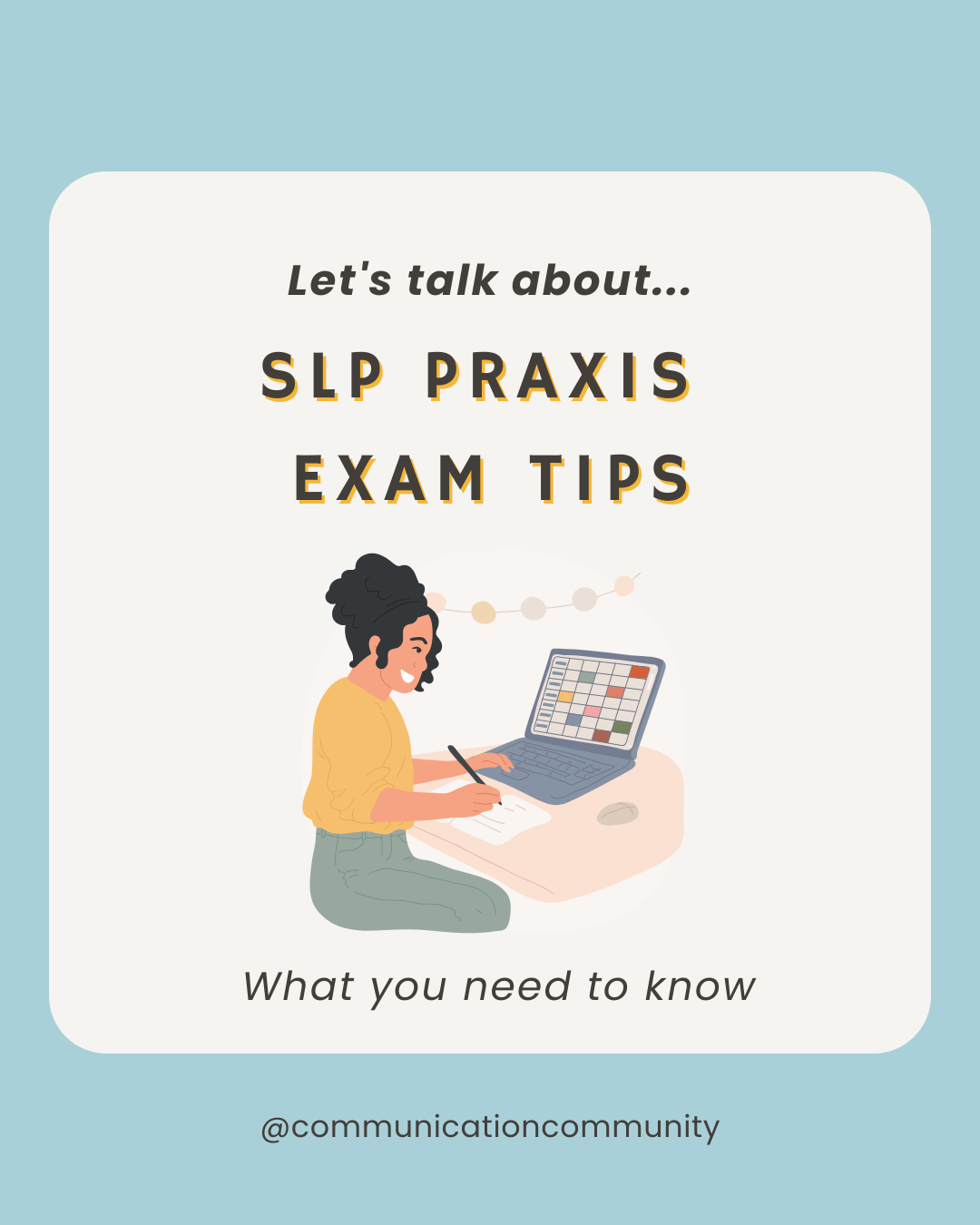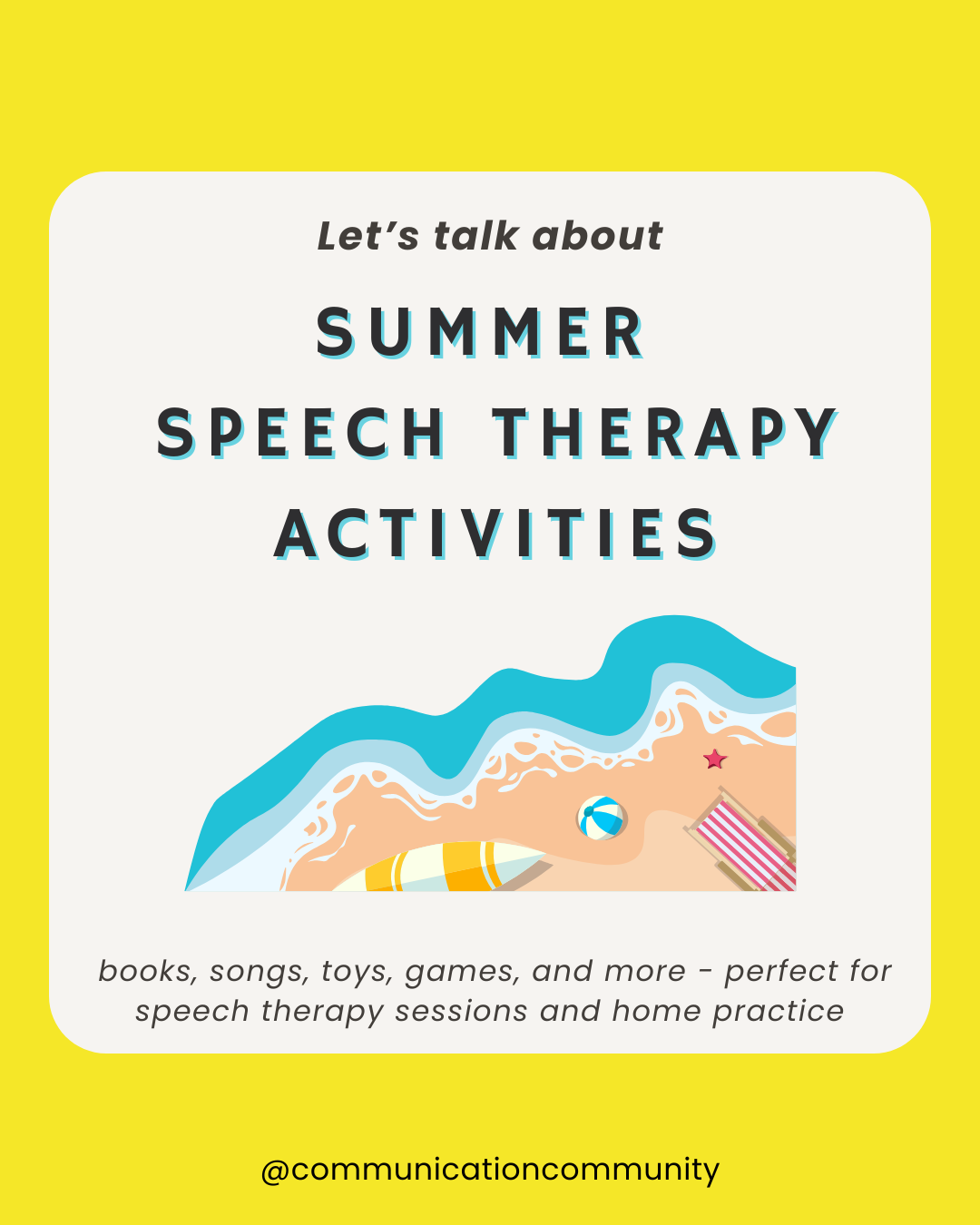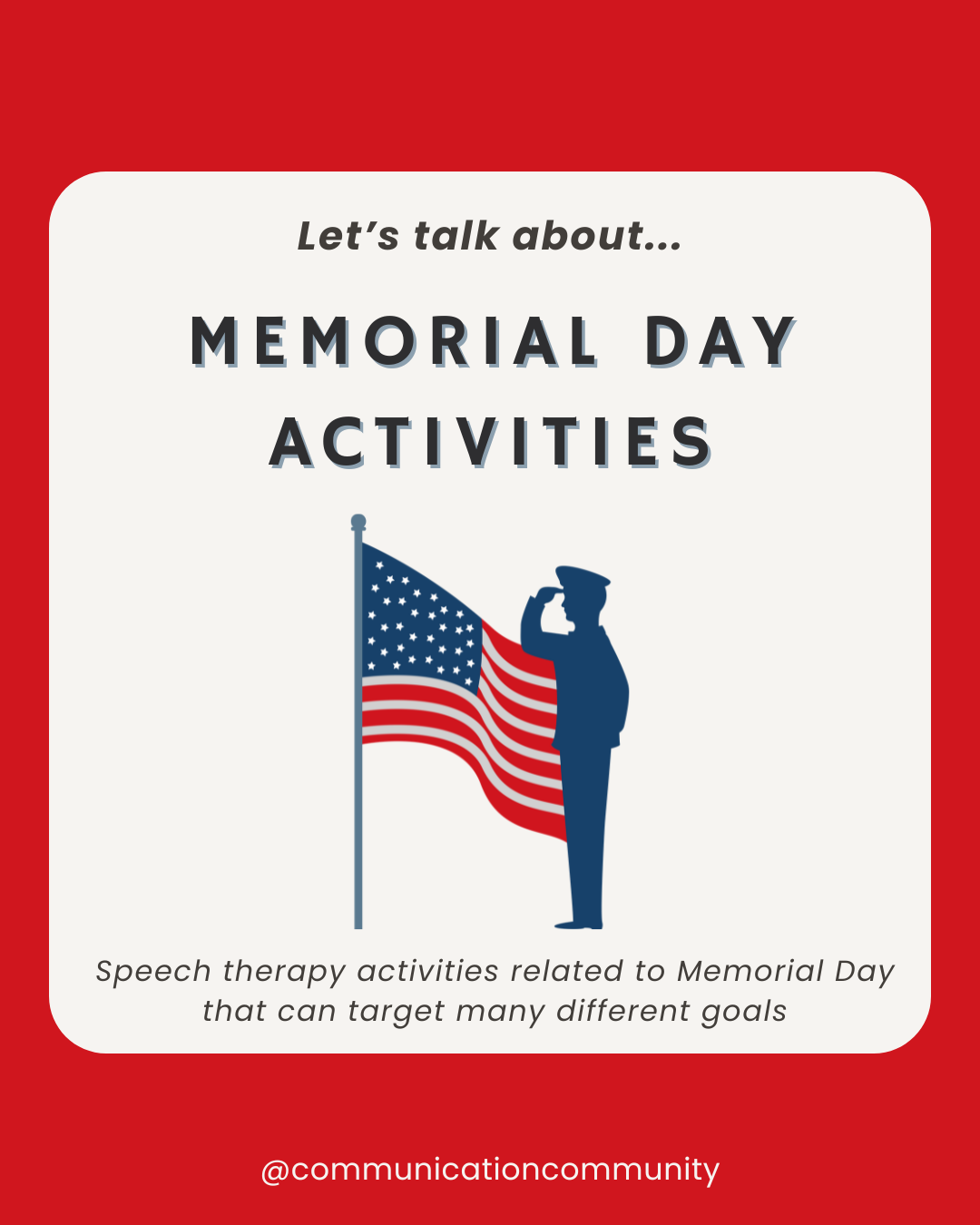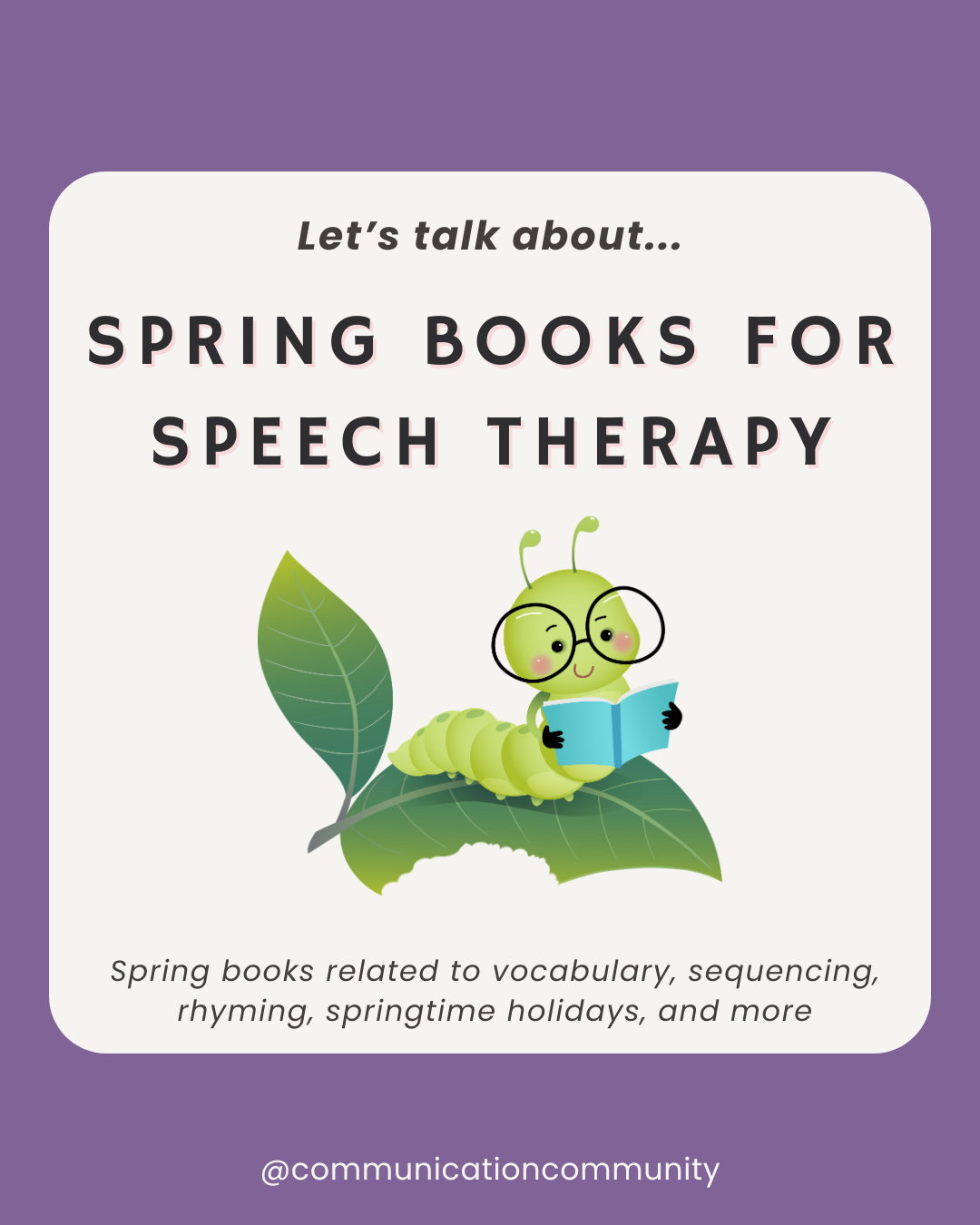How do I know if my child is learning to talk?
This blog post covers:
- Language Development in Babies and Toddlers
- Aspects of Child Language Development
- Prelinguistic Communication Skills
- Addressing Language Development Concerns
- How to Support Language Development
- Additional Information and Resources
Language Development in Babies and Toddlers
Language development in children includes receptive language and expressive language. BOTH are very important for the development and understanding of our complex language systems. Receptive language is the language we understand whereas expressive language is the language we use. Receptive language development often precedes expressive language; this means that children often understand a lot more language than they use. For example, a child may hear you say “dog,” and then point to your dog, but not be able to verbally say “dog.”
When we talk about the language we understand and use, it includes more than just spoken vocabulary. Let’s dive in more…
Aspects of Child Language Development
A lot of language development occurs before a child starts “talking!” This includes nonverbal communication (e.g., using gestures, joint attention), and vocalizing (e.g., babbling). We often refer to these as prelinguistic (before language) communication skills. Children sometimes use a combination of nonverbal and verbal language when they are just starting to talk. This means they may verbally speak some words while also using gestures (e.g., pointing, waving, reaching, etc.).
Prelinguistic Communication Skills
- Responding to sounds and voices: Children may react when they hear a loud noise or a familiar voice. A reaction may include opening their eyes (if they were closed), turning their head towards the noise, and smiling (or fussing).
- Vocalizations: This can also be thought of as babbling. Initially, it may sound like non-meaningful simple noises such as “ba.” However, over time, these babbles get longer (e.g., go from “ba” to “baba” to “badada”) and begin to sound more and more like actual words or language.
- Gestures/signs: Gestures (or manual signs) can include pointing at something interesting, waving at someone, or moving your hands or body around in some way. Gestures are a big part of another area of language called pragmatic language (social language). Many children understand the general meaning of certain gestures or signs (e.g., bringing hands together to ask for “more”) before they are able to verbally communicate this message.
- Imitations: Children can imitate sounds as well as gestures and actions. Children may try to imitate a word or phrase you use; this is part of their learning process. Additionally, if you point at something you see, they may also point and attend to it. This taps into another prelinguistic skill we will elaborate on below…
- Joint attention: This refers to you and your child both paying attention to the same thing. Believe it or not, this is a very meaningful prelinguistic skill! For example, if you point to a flower and your child then looks at the flower, you are engaging in joint attention toward the flower. You can also engage in joint attention if you are looking at a book together or playing with the same toy. Using eye contact is a big part of joint attention but it is not the only way to engage in joint attention.
- Understanding basic directions: One way to determine if a child is developing receptive language skills is by seeing if they are able to understand or follow simple instructions. For example, if they are playing with a ball and car, you say, “Give me the car,” then they hand you the car, this can be indicative that they understand the general meaning of the words in the sentence. You may also put your hand out as a gesture for them to put the object in your hand. They may be using their receptive language skills to understand the meaning of this gesture (i.e., “give me”) as well.
- Playing: How a child plays can be indicative of language development. For example, if a child uses a toy to imitate an action they’ve seen before, they are demonstrating imitation and gestural skills/awareness. This could look like them using a play towel to cover/wrap a doll or animal like you wrap a towel around them after a bath. Children can also engage in simple turn-taking activities with toys. If you roll a ball down a ramp, then they may roll a ball down. Read more about play skills here.
Addressing Language Development Concerns
If you are concerned about your child’s language development (and let’s remember, language is not ONLY what your child can say or express), consider whether they are demonstrating some of the mentioned prelinguistic communication skills.
If they are not imitating sounds or gestures consistently, they may not be ready to imitate full words yet. You can support them by modeling prelinguistic skills (i.e., demonstrating the action you would like them to eventually imitate) and nonverbal communication (e.g., consistently waving when you see a familiar person).
As mentioned earlier, receptive language precedes expressive language. If your child does not appear to understand many words, they may not be ready to use them yet.
On average, a child will not begin combining words (e.g., using 2 or more words together, such as “more ball”) until they have 50 individual words.
This may also be impacted by the types of words they know. For example, if most of their vocabulary consists of nouns (e.g., “ball,” “mama,” “dog,” “milk”) but they do not have many verbs (e.g., "go," "stop," "sit," "see") or adjectives (e.g., "big," "more"), they may be less likely to combine words.
If you have any concerns about your child’s speech or language development, we encourage you to speak with their pediatrician or a speech-language pathologist! They may refer you for a speech and language evaluation.
How to Support Language Development
There are many ways to support language development, which also includes supporting the development of prelinguistic skills. If your child does work with a speech-language pathologist (SLP), this would definitely be something the SLP would address too!
Pay attention to the sounds your child notices. For example, if they turn their head towards someone when they walk into the room, you can comment on that. You could say, “You see that big brother is coming in. Hi brother!”
If they start vocalizing, respond to what they are saying. This also reinforces the concept of turn-taking that we would see with more developed play/conversational exchanges. You may “make up” what they are saying and respond according to that. For example, if their vocalizations appear happy, you could say, “Yes, it’s so exciting! We are going for a walk!”
Respond to them when they start babbling. You may say exactly what they say or add to it (we call this strategy using expansions or extensions). For example, if they say, “Da da,” you can say, “Da da!” or “Da da da.” This is also a great way to build turn-taking and joint attention skills.
Model gestures and actions and give plenty of wait time for them to respond. For example, you may wave goodbye when you are leaving somewhere. While they are engaging in joint attention, wave and look at them, then wait 5-10 seconds and see if they wave back.
Engage in turn-taking and joint attention activities. This could be through playing with the same toy (e.g., you stack a ring then give one to them to stack), reading a book, or singing a song while using gestures.
As with all forms of language development, children are not likely to respond and pick up the skill immediately. They often need to be exposed to it multiple times. Additionally, they may demonstrate the skills (e.g., waving) inconsistently at first before demonstrating them almost all the time.
Looking for more information?
- 8 Ways to Help Your Toddler Talk
- How Do I Know If My Child Has a Language Delay?
- What is Speech Therapy & Why Would a Child Need It?
- What is Early Intervention?
Featured Products
- Speech and Language Handouts
- Early Intervention and Preschool/Pre-K Speech Therapy GOAL BANK with RESOURCES
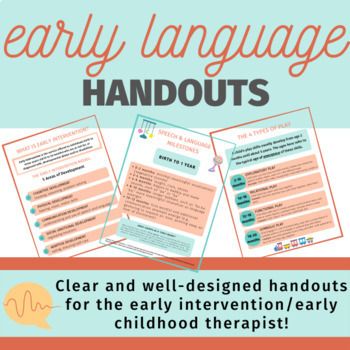
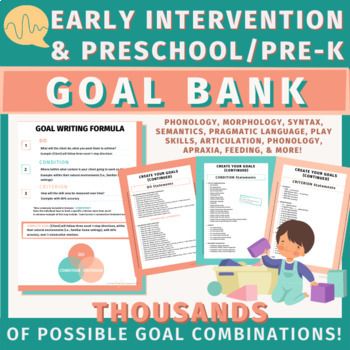
Find speech and language milestones, play skills development, and goals for all aspects of speech, language, and even feeding!
References:
American Speech-Language-Hearing Association. (n.d.). Late language emergence. ASHA Practice Portal. Retrieved June 7, 2023, from https://www.asha.org/practice-portal/clinical-topics/late-language-emergence/#collapse_6
National Institute on Deafness and Other Communication Disorders. (n.d.). Speech and language. Retrieved June 7, 2023, from https://www.nidcd.nih.gov/health/speech-and-language
NAPA Center. (n.d.). Prelinguistic communication. Retrieved June 7, 2023, from https://napacenter.org/prelinguistic-communication/

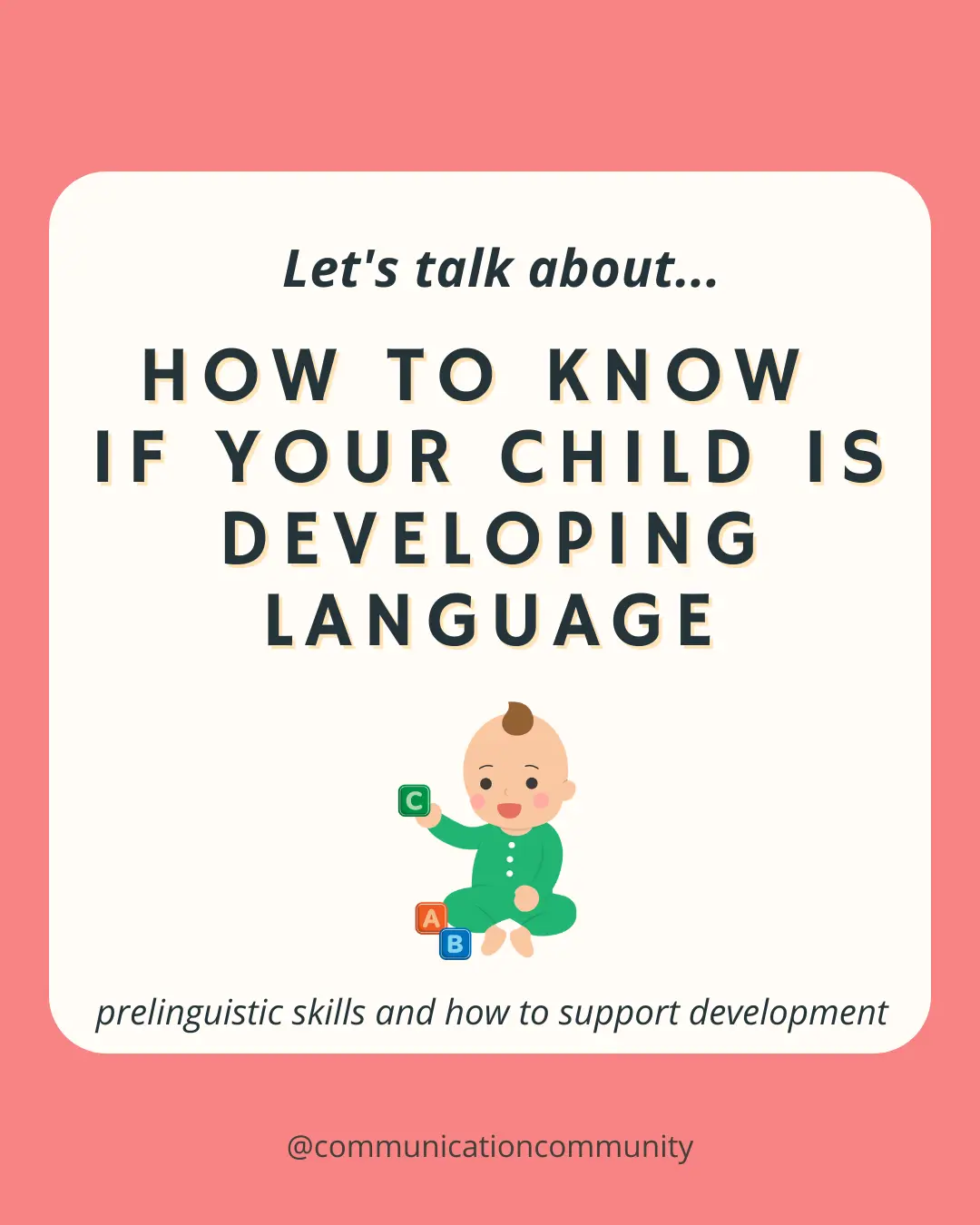
![How to Write Apraxia Goals [with goal bank]](https://www.communicationcommunity.com/content/images/2024/07/Apraxia-Goals--1-.png)
